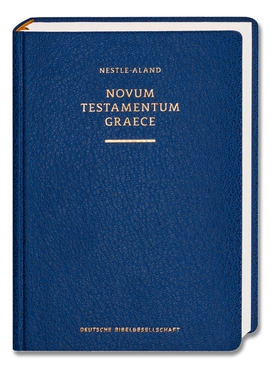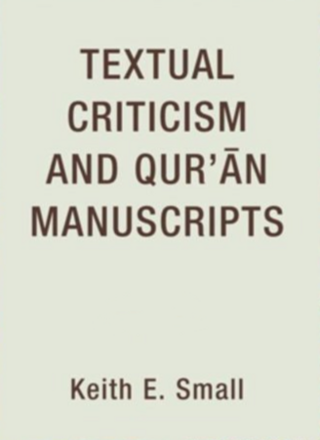Philology is the study of language in oral and written historical sources. It is the intersection of textual criticism, literary criticism, history, and linguistics with strong ties to etymology. Philology is also defined as the study of literary texts and oral and written records, the establishment of their authenticity and their original form, and the determination of their meaning. A person who pursues this kind of study is known as a philologist. In older usage, especially British, philology is more general, covering comparative and historical linguistics.

Textual criticism is a branch of textual scholarship, philology, and literary criticism that is concerned with the identification of textual variants, or different versions, of either manuscripts (mss) or of printed books. Such texts may range in dates from the earliest writing in cuneiform, impressed on clay, for example, to multiple unpublished versions of a 21st-century author's work. Historically, scribes who were paid to copy documents may have been literate, but many were simply copyists, mimicking the shapes of letters without necessarily understanding what they meant. This means that unintentional alterations were common when copying manuscripts by hand. Intentional alterations may have been made as well, for example, the censoring of printed work for political, religious or cultural reasons.
In textual criticism of the New Testament, the Western text-type is one of the main text types. It is the predominant form of the New Testament text witnessed in the Old Latin and Syriac translations from the Greek, and also in quotations from certain 2nd and 3rd-century Christian writers, including Cyprian, Tertullian and Irenaeus. The Western text had many characteristic features, which appeared in text of the Gospels, Book of Acts, and in Pauline epistles. The Catholic epistles and the Book of Revelation probably did not have a Western form of text. It was named "Western" by Semmler (1725–1791), having originated in early centers of Christianity in the Western Roman Empire.

Textus Receptus refers to the succession of printed Greek New Testament texts starting with Erasmus' Novum Instrumentum omne (1516) and including the editions of Stephanus, Beza, Elzevir, Colinaeus and Scrivener. Additionally, although not being derived from the work of Erasmus, some such as the Trinitarian Bible Society also associate the Complutensian Polyglot with the Textus receptus tradition.
Biblical studies is the academic application of a set of diverse disciplines to the study of the Bible, with Bible referring to the books of the canonical Hebrew Bible in mainstream Jewish usage and the Christian Bible including the canonical Old Testament and New Testament, respectively. For its theory and methods, the field draws on disciplines ranging from ancient history, historical criticism, philology, theology, textual criticism, literary criticism, historical backgrounds, mythology, and comparative religion.

Novum Testamentum Graece is a critical edition of the New Testament in its original Koine Greek published by Deutsche Bibelgesellschaft, forming the basis of most modern Bible translations and biblical criticism. It is also known as the Nestle–Aland edition after its most influential editors, Eberhard Nestle and Kurt Aland. The text, edited by the Institute for New Testament Textual Research, is currently in its 28th edition, abbreviated NA28.
New Testament manuscripts in Greek are categorized into five groups, according to a scheme introduced in 1981 by Kurt and Barbara Aland in The Text of the New Testament. The categories are based on how each manuscript relates to the various text-types. Generally speaking, earlier Alexandrian manuscripts are category I, while later Byzantine manuscripts are category V. Aland's method involved considering 1000 passages where the Byzantine text differs from non-Byzantine text. The Alands did not select their 1000 readings from all of the NT books; for example, none were drawn from Matthew and Luke.
A biblical manuscript is any handwritten copy of a portion of the text of the Bible. Biblical manuscripts vary in size from tiny scrolls containing individual verses of the Jewish scriptures to huge polyglot codices containing both the Hebrew Bible (Tanakh) and the New Testament, as well as extracanonical works.

Family 1 is the name given to a group of Greek New Testament minuscule manuscripts of the Gospels, identified by biblical scholar Kirsopp Lake. These manuscripts vary in date from the 12th to the 15th century. The group takes its name from minuscule codex 1, now in the Basel University Library, Switzerland. "Family 1" is also symbolized as ƒ1 in critical editions of the Greek New Testament. Textual-critic Hermann von Soden refers to the group as Iη. Initially named after minuscule 1, later studies have demonstrated that another minuscule, minuscule 1582, is likely a better candidate as a representation of the archetype from which the Family 1 manuscripts are descended.

Codex Coislinianus designated by Hp or 015, α 1022 (Soden), was named also as Codex Euthalianus. It is a Greek uncial manuscript of the Pauline epistles, dated palaeographically to the 6th century. The text is written stichometrically. It has marginalia. The codex is known for its subscription at the end of the Epistle to Titus.

Syriac is a dialect of Aramaic. Portions of the Old Testament were written in Aramaic and there are Aramaic phrases in the New Testament. Syriac translations of the New Testament were among the first and date from the 2nd century. The whole Bible was translated by the 5th century. Besides Syriac, there are Bible translations into other Aramaic dialects.

Minuscule 205, δ 500 (Soden), 68 (Rahlfs), is a Greek minuscule manuscript of the Old and the New Testament, on parchment, from the 15th century. It has some marginalia.
Minuscule 826 is a Greek minuscule manuscript containing the New Testament Gospels written on parchment. It is designated as 826 in the Gregory-Aland numbering of New Testament manuscripts, and ε218 in the von Soden numbering of New Testament manuscripts.Using the study of comparative writing styles (palaeography), it has been assigned to the 12th century. It contains marginal notes.
Editio Octava Critica Maior is a critical edition of the Greek New Testament produced by Constantin von Tischendorf. It was Tischendorf's eighth edition of the Greek Testament, and the most important, published between 1864 and 1894.
Historical criticism is a branch of criticism that investigates the origins of ancient texts to understand "the world behind the text" and emphasizes a process that "delays any assessment of scripture's truth and relevance until after the act of interpretation has been carried out". While often discussed in terms of ancient Jewish, Christian, and increasingly Islamic writings, historical criticism has also been applied to other religious and secular writings from various parts of the world and periods of history.
Lectionary 311 (Gregory-Aland), designated by siglum ℓ311 is a bilingual Greek–Arabic manuscript of the New Testament, on parchment. Palaeographically it has been assigned to the 12th century. The manuscript has survived in a fragmentary condition.

Textual criticism of the New Testament is the identification of textual variants, or different versions of the New Testament, whose goals include identification of transcription errors, analysis of versions, and attempts to reconstruct the original text. Its main focus is studying the textual variants in the New Testament.

Textual Criticism and Qurʼān Manuscripts is a 2011 book on the textual criticism of the Quran by Keith E. Small, a researcher and lecturer at the Centre for Islamic Studies and Muslim–Christian Relations at the London School of Theology.
Leighton Durham Reynolds was a British Latinist who was known for his work on textual criticism. Spending his entire teaching career at Brasenose College, Oxford, he prepared the most commonly cited edition of Seneca the Younger's Letters.
Maurice Arthur Robinson is an American professor of New Testament and Greek (retired) and a proponent of the Byzantine-priority method of New Testament textual criticism.








